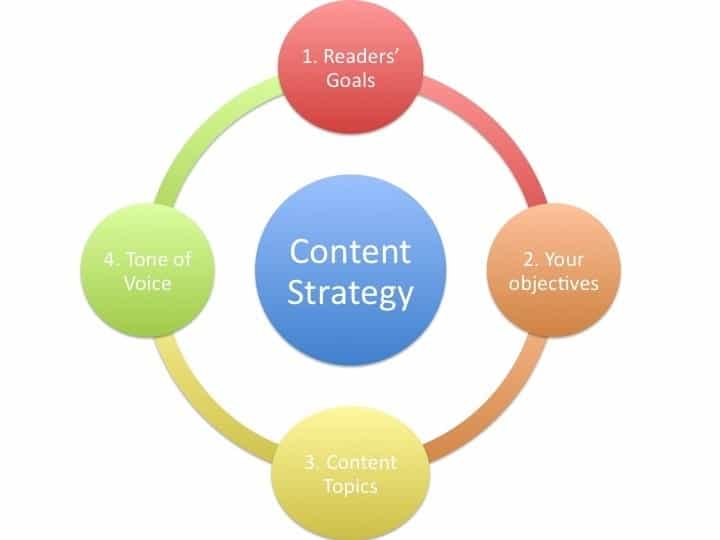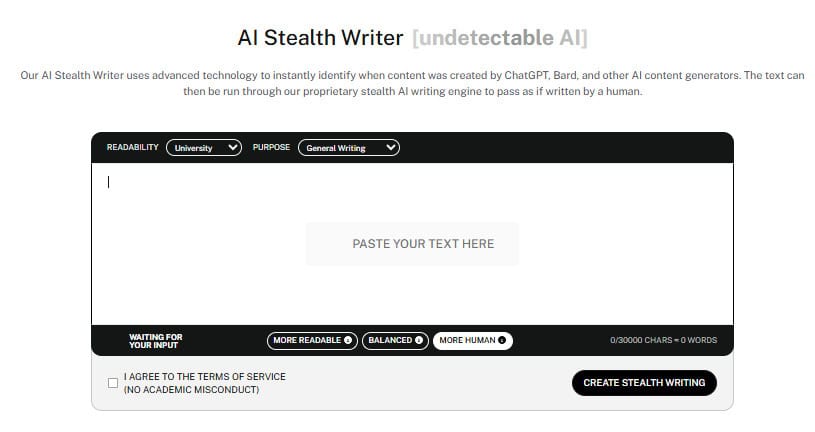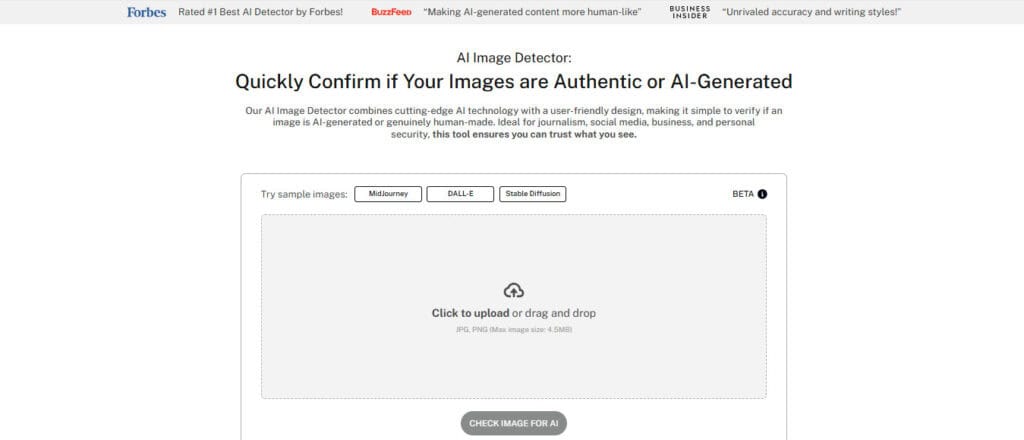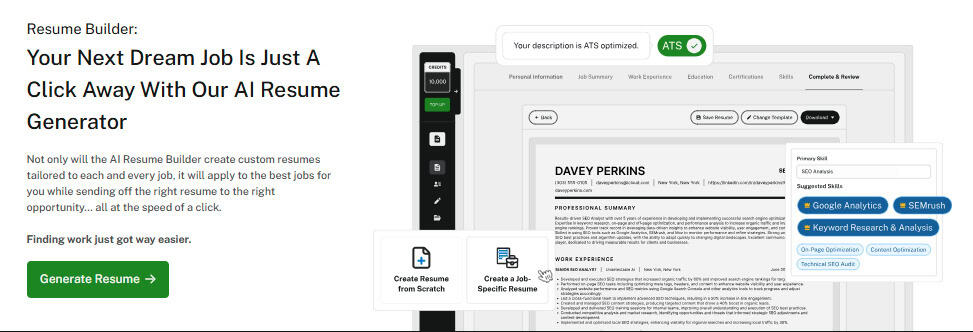Content marketing has changed a lot over the years, with 2025 bringing many important changes.
With new AI tools, different ways people search for information, and changing customer expectations marketers need to adjust quickly to stay relevant.
Let’s look at the content marketing trends making impacts this year and how you can use them effectively for your clients.
Why 2025 Will Be a Pivotal Year for Content Strategy
New technology and modifications in consumer behavior patterns have produced optimal conditions for content marketing to flourish.
The small adjustments of the previous years have evolved into major developments in content creation, distribution and utilization methods.
Many businesses now use AI in their content, making competition tougher. Brands that don’t keep up risk becoming invisible online.


Never Worry About AI Detecting Your Texts Again. Undetectable AI Can Help You:
- Make your AI assisted writing appear human-like.
- Bypass all major AI detection tools with just one click.
- Use AI safely and confidently in school and work.
Success will only come to those who balance new technology with real human connection.
In this article, we will explore SEO and content marketing trends that are reshaping the industry and how you can leverage them to position yourself for success.
- Smarter AI = Smarter Content
AI has gotten much better in 2025, changing how content is created and shared.
Good AI writing tools now make content that’s not just correct but relevant and matched to business goals.
One of these tools includes offerings from Undetectable AI; AI SEO Writer and AI Stealth Writer.
They have become remarkably more sophisticated, producing content that’s not only grammatically flawless but contextually relevant and strategically aligned with business objectives.
This year marked significant progress in AI technology as it changed how marketing organizations handled content development and supply methods.
These AI tools now create full marketing campaigns, develop stories across different channels, change the tone for different audiences, and predict how well content will perform.
However, human oversight is still important, as the creative judgment, emotional understanding, and ethical thinking that humans bring remain better than what AI can do on its own.
Additionally, Undetectable AI Image Detector and Humanizer become more important as AI-created content becomes more common.
Consumers want authenticity, and these detection tools help maintain trust.
- Hyper-Personalized Experiences
Generic content doesn’t work in 2025.
Consumers now want personalized interactions customized to their individual needs and are prepared to make major efforts toward achieving this level of service.
The analytics from consumers help brands create dynamic content that changes in real-time based on user behavior.
This goes beyond basic targeting to include behavior triggers, emotional states, and context.
Many companies also use systems that break content into building blocks that can be reassembled for each individual.
This approach ensures personal interactions while staying efficient.
What makes this trend special in 2025 is that content systems now predict needs before users even know they have them, creating intuitive experiences.
This changes content marketing from reactive to proactive and helps build stronger connections through helpful content.
- Search Shifts to SGE and AI-powered Results
Ever had to Google a particular topic and the first thing you see is an aggregation of AI responses?
Well, in 2025, the traditional search engine results page has become nearly unrecognizable.
Google’s Search Generative Experience (SGE) and similar AI-powered search tools have changed how users find content, with AI-created summaries and direct answers now dominating search results.
Content must now be structured to be AI-friendly, with clear facts, complete information, and authority that makes it likely to be cited by search algorithms.
To be a winner in this new search context, you must create definitive resources that answer questions completely, with supporting evidence and high accuracy.
Importantly, ranking for “position zero” often means your content is the only content users see, as AI summarizes your information without requiring clicks to your site.
This has led to new content licensing models, where publishers get paid when their content is used for AI-generated answers.
- Rise of Content as a Service
Content as a Service (CaaS) frameworks are quickly substituting the existing traditional publishing structure.
This framework enables content components to be built across multiple user devices.
CaaS also allows brands to publish their content across every platform, including websites, social media, IoT devices, AR/VR environments and AI assistants.
Advanced CaaS systems include smart delivery systems that automatically change content format based on context.
For example, the same information might appear as a detailed article on a desktop, a video clip on social media, or a voice response through a smart speaker.
Organizations using CaaS see big improvements in content value, with production costs decreasing while engagement increases across channels.
- Video + Interactive Content Still Rule
Despite new technology, video continues to dominate content consumption, though its form has changed.
Short-form video has grown beyond entertainment to become important for education, product demos, and business marketing, where an AI video maker makes the process more efficient.
In fact, Brands are creating dedicated visual assets designed specifically to be found through image recognition systems, with clear product presentations and distinctive visual elements. This trend is especially evident on platforms like Instagram shoppable, where businesses can seamlessly integrate shopping features into their video content.
What’s specifically new is the rise of interactive video experiences that combine watching with active participation.
Technologies like shoppable video, choose-your-own-adventure stories, and augmented reality have transformed video into something users can explore.
Brands also engage their audience through interactive contests and challenges that prompt them to create content related to the brand.
Similarly, interactive content like quizzes, calculators, and configurators have become commonplace. Creators use a meme creator in no time to create creative memes to share instantly.
Users now expect content to respond to their input and provide personal value.
Viral interactive content combines fun with usefulness and creates experiences users return to again and again.
In addition, new web technologies have made rich interactive experiences accessible across devices without needing special apps, removing barriers to users.
- Author Authority & Digital Trust
While AI-created content continues to grow, human expertise is now very valuable.
We’re seeing a return to authority with brands highlighting the credentials, experience, and unique viewpoints of their human content creators.
Search systems and social media platforms have increased the importance given to expert signals, making author credentials crucial for ranking.
Content from recognized experts receives better treatment in distribution and presentation.
To ensure your expertise is recognized, create high-quality content that demonstrates your industry knowledge and secures quality backlinks.
Digital trust markers have become standardized, with content verification systems helping users tell the difference between human-created, AI-assisted, and fully AI-generated content.
Rather than hiding AI use, we should be open about how AI tools are used to build consumer trust.
- Content for AI Assistants, Not Just Humans
One of the biggest shifts in content strategy recognizes that AI assistants have become important consumers of content.
Brands now optimize for both human readers and the AI systems that increasingly control information access.
This dual-audience approach requires content that engages humans while remaining structured for machine understanding.
New metadata standards have emerged to help AI assistants understand content context, trustworthiness, and relevance to specific questions.
Organizations are developing dedicated AI assistant strategies, creating specialized content formats designed specifically for consumption through voice assistants, chatbots, and similar interfaces.
This includes conversational content flows that anticipate and respond to common follow-up questions.
The stakes are high, as when consumers ask an AI assistant for recommendations, being excluded from consideration can mean complete invisibility.
Brands that establish themselves as preferred sources for AI systems gain tremendously valuable positioning at the exact moment of consumer decision-making.
- Voice + Visual Search Implementation
Voice search has grown into a primary interface, with many adults using it daily.
Similarly, visual search has become mainstream, with users increasingly starting their product discovery by pointing their cameras at items of interest.
These methods require different optimization strategies than traditional text search.
Voice searches tend to be conversational and question-based, requiring content that directly addresses natural language questions.
A successful voice content provides clear, authoritative answers while maintaining a conversational tone that sounds good when read aloud.
Brands are now creating dedicated visual assets designed specifically to be found through image recognition systems, with clear product presentations and distinctive visual elements.
In other to be on top of your game with this trend, improve your metadata extraction and embed more videos in your cornerstone content.
- Real-time Content & Trend Hijacking
The content lifecycle has shortened dramatically, with real-time creation and distribution becoming standard practice for competitive brands.
Advanced AI helps marketers identify emerging conversations, create relevant content, and share it across channels within minutes rather than days.
This capability has elevated “trend participation” from an occasional tactic to a core content strategy.
Brands that can thoughtfully join trending conversations see much higher engagement rates than planned content.
The key is relevance and authenticity; many brands who participate in trends require a genuine connection to brand values rather than forced associations.
- Ethical AI Use
AI is becoming central to content creation and as such ethical considerations have moved from theoretical discussions to practical business requirements.
Consumers, regulators, and industry groups are demanding greater transparency and responsibility in how AI shapes the content ecosystem.
Industry standards for responsible AI disclosure have come up, with common symbols and language helping consumers understand when and how AI has been involved in content creation.

Image Source – Smart Insights
How Undetectable AI Powers 2025 Strategies
Undetectable has positioned itself as an essential partner for forward-thinking marketers.
Their array of sophisticated AI addresses the unique challenges and opportunities of the current content ecosystem.
Here are some of the tools that Undetectable AI uses to power 2025 strategies:
AI SEO Writer
The Undetectable AI SEO Writer has become indispensable for creating high-ranking content at scale. It continuously learns from real-time search data to produce content engineered to perform well in the new AI-powered search environment.

AI Stealth Writer
For brands concerned about maintaining an authentic voice, the AI Stealth Writer offers an effective solution. It creates content with natural language patterns that preserve brand voice while ensuring the content reads as genuinely human.

AI Image Detector
Trust and verification have become central to content strategy, which is why Undetectable AI Image Detector has seen widespread adoption. This feature allows organizations to verify the authenticity of visual assets before publication, protecting brand reputation and ensuring compliance with transparency regulations.

AI Resume Builder
Even personal branding isn’t left out. The AI Resume Builder enables professionals to create strategically optimized career content that stands out to both human recruiters and AI screening systems.

What distinguishes Undetectable in the AI market is our focus on ethical implementation and strategic guidance.
Rather than simply providing technical capabilities, we offer frameworks for responsible AI use that align with both business objectives and social values.
Want to give our AI Detector and Humanizer a spin? They’re right below!
FAQs
Is AI Content Still Useful in 2025?
Yes, AI content is essential in 2025, as it takes your thoughts and distills them effectively.
However AI content works best with human oversight. The best content marketer uses AI as a helper tool rather than a replacement for their creativity.
What Is The Most Important Content Format Right Now?
There’s no one-size-fits-all for any organization. What matters is adaptability across channels.
Short interactive videos might show high engagement but it only works best as an entry point to deeper content.
Is Traditional SEO Dead?
No, traditional SEO has changed, not disappeared.
Core principles of traditional SEO now extend beyond search pages to AI experiences, voice assistants, and visual search.
To be successful means merging both and becoming the trusted source that AI systems cite when answering questions.
How Do I Keep Up With All These Changes?
You don’t have to learn all the trends at once.
Focus on changes relevant to your specific audience rather than trying to master everything at once.
Establish a weekly learning routine, create an innovation team for testing, and build trusted information sources.
Conclusion
At Undetectable, we understand that effective content marketing balances technical advancements with authentic human connection.
Our ethical approach positions brands for success in the digital environment.
Sign up for Undetectable today and discover how our AI–powered B2B content marketing trends can help you create effective, authentic content while staying ahead of current trends.
